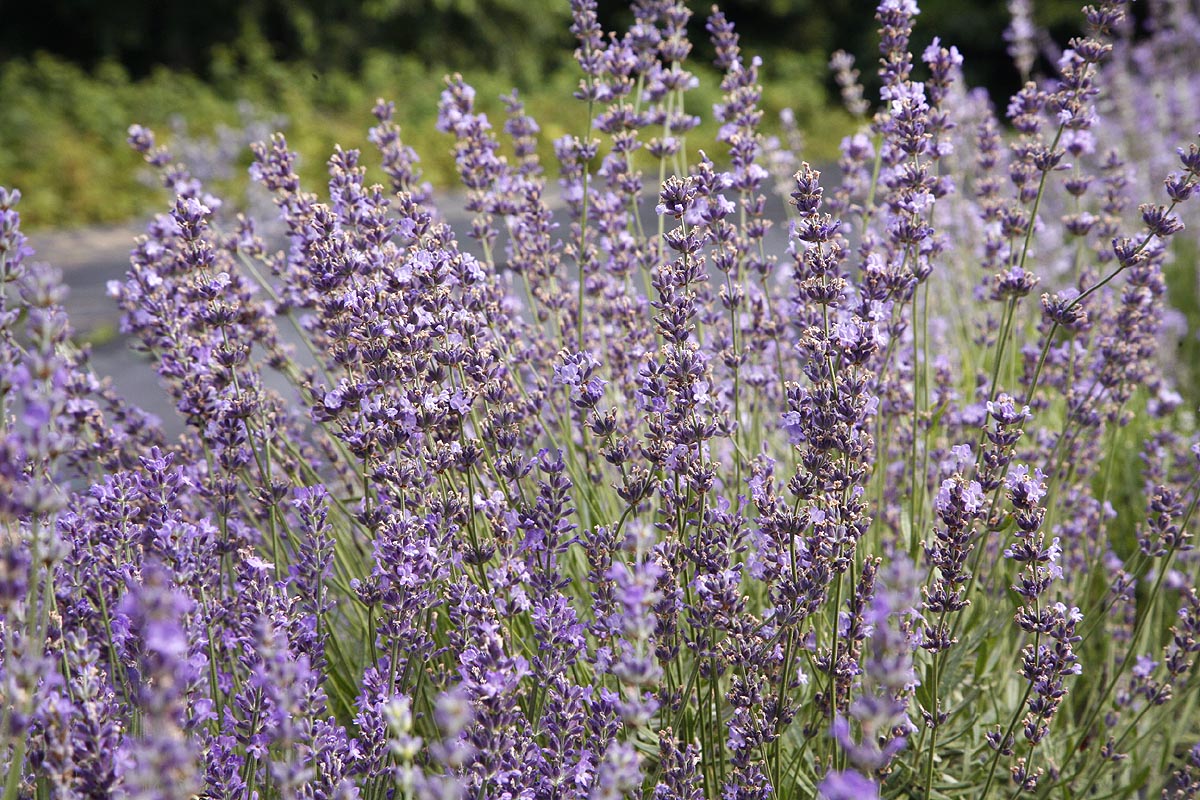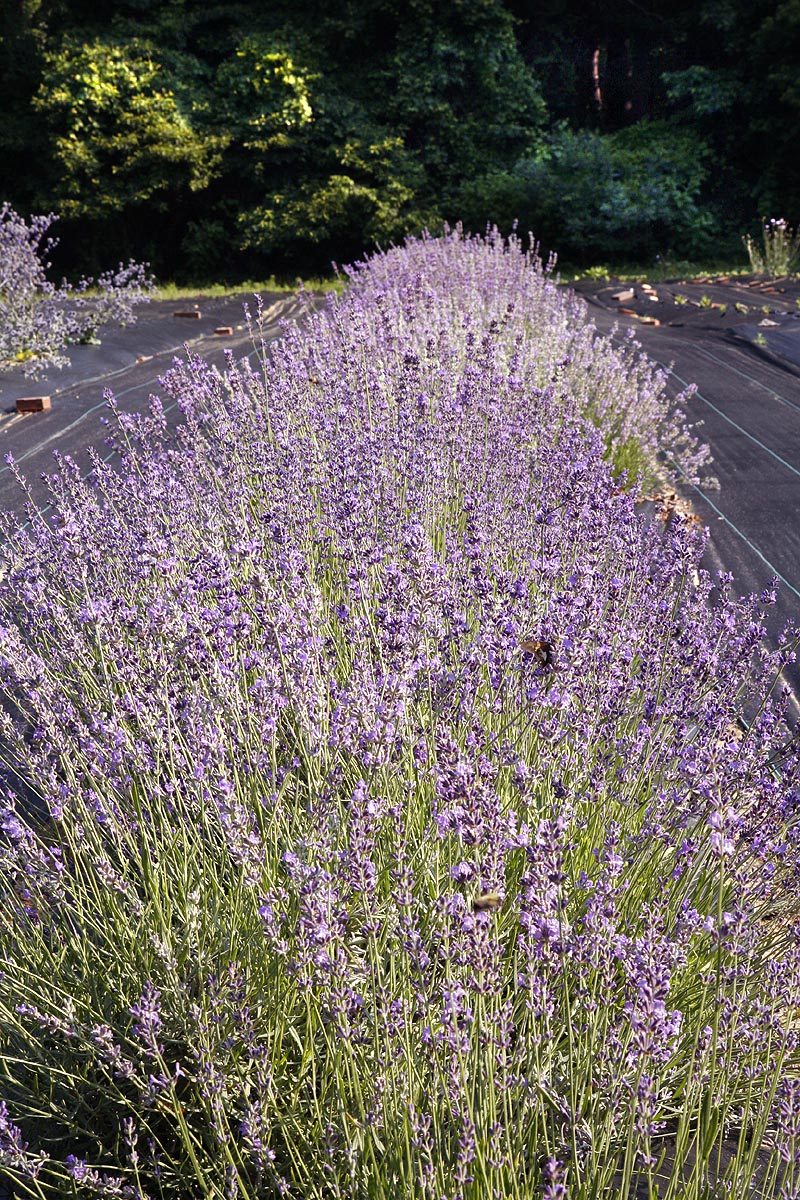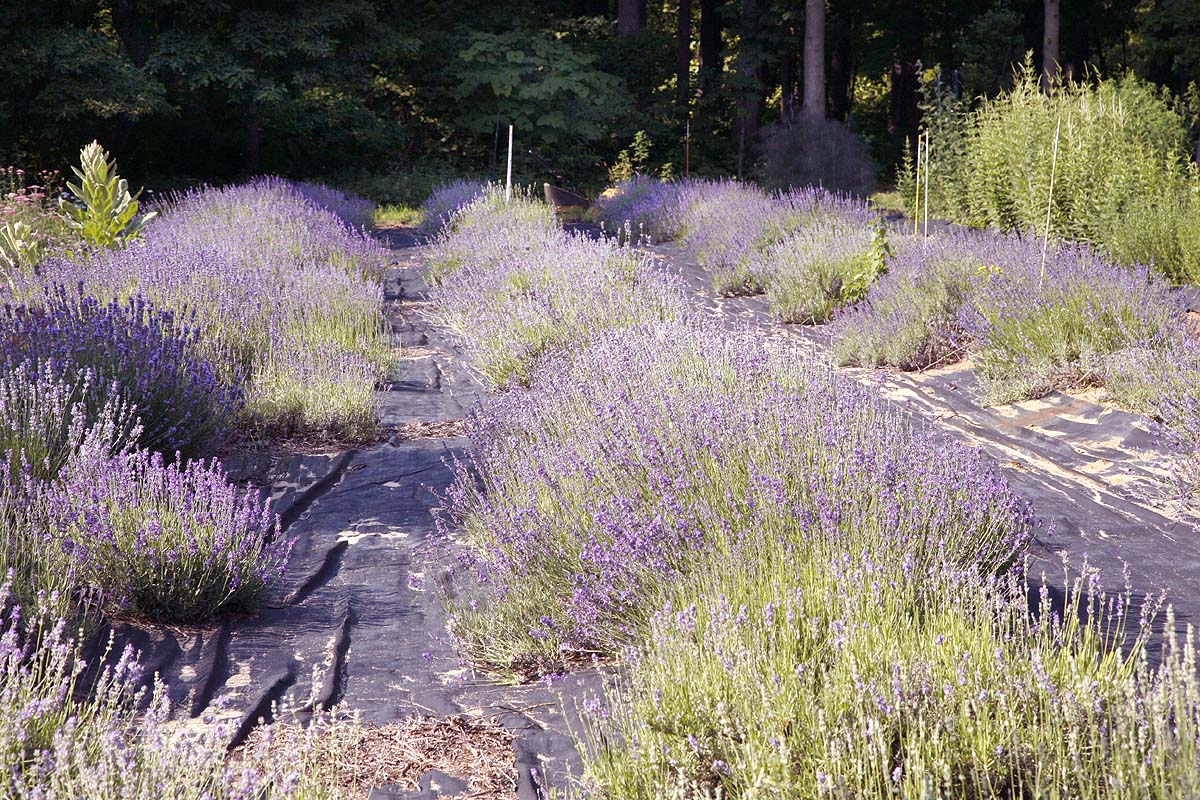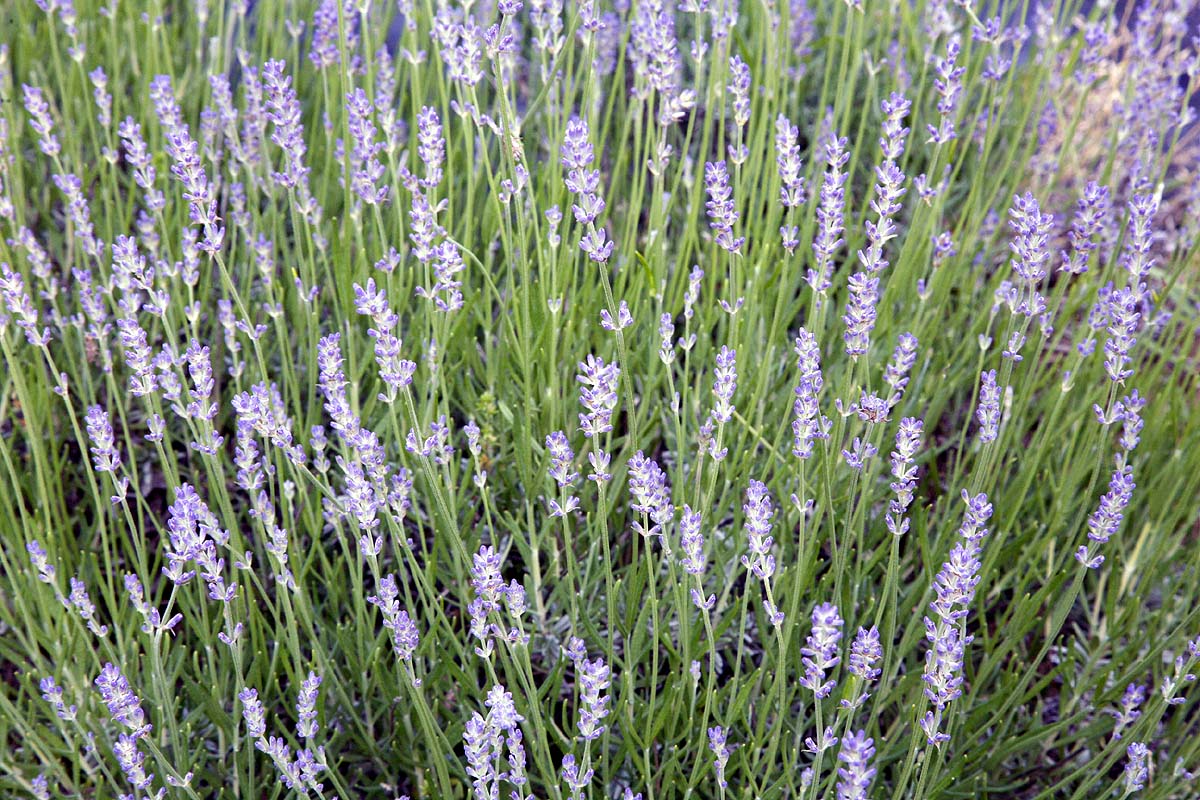It's hard to imagine a garden without at least one lavender bush it's so versatile. This wonderful plant is very drought tolerant and has such lovely flowers and of course a wonderful scent. It likes fun sun and does quite well in heat. Once established it takes very little care and maintenance, although a good pruning once a year keeps the bushes flowering more prolifically and gives them better shape. Deer and rabbits don't eat it. There are many different kinds of lavender plants. The one we sell here is English Lavender the one that's used in almost all the lavender bags and lavender products that you see on the market.
Description of Lavender (Lavandula angustifolia).
Bushes vary a great deal. Some have a very compact habit forming small rounded mounds others are more sprawling and need to be pruned into shape.
Growing Lavender (Lavandula angustifolia) from seed.
Seeds that germinate late in the season should be kept inside over the winter and planted out after frost has passed the following year. Very small seedling plants may not survive well so give them the best chance you can. Keeping your seed tray until the middle of the second year is suggested just in case more seeds decide to germinate. After this empty the tray out in the area where your lavender is growing so if any more do decide to grow they are in the right spot.
Expect to get a wide range of plants when you grow from seed. Flowers will range from white to deep purple some bushes will be compact while others are more sprawling. Some have short flower stalks while others can be very long. If you only want a few plants grow them on for a while and then discard the ones you don't like. Cuttings can be taken from bushes you really like to increase the number if you want.
Poor and slow germination accounts for the reason lavender plants are so expensive to purchase.
Location and Care of Lavender (Lavandula angustifolia).
It is hardy from zone 5-8, however colder damp winters may occasionally kill plants. We lost three bushes in the very cold snowy winter of 2008-09 out of about 550. We are in zone 6b. Lavender must have a well drained soil, it does not like it's roots to be continuously wet so take care if planting in a clay soil to improve drainage first.
Although many reference state that it's essential for he soil to be alkaline this is not essential. The soil on our farm is pretty acid (it was pH 5.2 when we first arrived) and the lavender does just fine. We do supplement the soil with lime but now the bushes are well established they don't get as much buffering so it pretty acid now considering that any irrigation water will also be acidic. It does not need much in the way of fertilizer and once established can be pretty much neglected. Leaner soils with less fertilizer produces a higher concentration of essential oils meaning you get a better scent.
Lavender grows very quickly once the small plants are planted. Our bushes grew from little seedlings to about two feet all around in two years and they continue to increase in size every year. When planting make sure you leave enough area around the plant for it to grow, and grow fast. If you want a lavender hedge still space the plants about three to four feet apart of they will grow together too quickly and not establish a thick leaf base. Most of my plants merged into a long 'hedge' in the third year after planting from seed with a spacing of four feet. Make sure you water well in the first year to ensure they are established, then watering can be reduced and even stopped.
Pruning Lavender (Lavandula angustifolia)
Harvesting Lavender (Lavandula angustifolia).
For use as lavender bunches, wands or bags the flowers are usually allowed to open and begin to bloom this gives a fatter larger lavender 'flower' and thus is more 'filling'.
Harvest early in the day if possible on a dry sunny day when the dew has gone from the plants and the sun is not yet too high to decrease the oils in the plant. Cut to the base of the stem, don't worry if you get a few leaves as well, just consider it as a simple pruning.
Culinary Uses of Lavender (Lavandula angustifolia).
Medicinal Uses of Lavender (Lavandula angustifolia).
The essential oil is much milder than many other essential oils and it can be used directly on the skin where it can be used as an antiseptic and to help heal wounds. It is especially useful in burns, placing essential oil on a fresh burn can help it heal much faster and with less scaring. While the essential oil is milder is should still not be taken internally where it can be too strong for the body to handle. A tincture of the flowers is most efficacious internal method. Lavender is considered a nervine herb but is also a diuretic, antiseptic and to calm stomach complaints.
Externally it is used in many forms. Bags of lavender can be hung beside a bed to help to soothe and sedate for relaxing sleep. The oil can be rubbed on the temples to help with nervous headaches. It can also be sprayed around the house to create a calming atmosphere that can be restorative. Its powerful antiseptic properties are able to kill many of the common bacteria such as typhoid, diphtheria, streptococcus and Pneumococcus, as well as being a powerful antidote to some snake venoms.
A very effective house spray can be made mixing a few drops of lavender oil with a pint of distilled water. Place in a spray bottle and shake well, then spray. Keep shaking to ensure that the oil is well distributed through the water. Since a good essential oil leaves no residue and neither does distilled water this can safely be sprayed on any surface without leaving marks when it dries. Just ensure that the surface does not react with water before its dry. Can be used to spray carpets, bedding all kinds of fabrics, clothing or whatever you consider important. The aroma often lasts for several days from one spraying.
Other uses of Lavender (Lavandula angustifolia).
Lavender varieties and confusion.
More confusion comes from the fact that a lot of English Lavender is grown in France so its thought of as French lavender when its not really.
Lavender oil and aroma.









